Are you planning a trip to Japan and wondering about the language barrier? This comprehensive guide, brought to you by SIXT.VN, provides essential Japanese Travel Phrases to enhance your experience. Learning a few key phrases can significantly enrich your journey through Japan, making interactions smoother and more enjoyable. Whether you need basic greetings, assistance with directions, or help ordering food, these Japanese phrases will help you navigate Japan with confidence.
1. Why Learning Japanese Travel Phrases Matters
While many travelers successfully navigate Japan without knowing any Japanese, mastering a few key phrases can significantly enhance your travel experience. It’s more than just convenience; it’s about showing respect for the local culture and opening doors to richer interactions.
- Cultural Respect: Making an effort to speak even a little Japanese shows that you value the local culture, which is highly appreciated.
- Enhanced Interactions: Knowing basic phrases can transform simple transactions into meaningful exchanges, creating memorable moments.
- Smoother Navigation: From ordering food to asking for directions, basic language skills can make your trip much smoother and more enjoyable.
According to a 2023 study by the Japan National Tourism Organization (JNTO), tourists who attempt to speak Japanese, even at a basic level, report a higher satisfaction rate with their travel experience. This highlights the importance of learning even a few key phrases before your trip.
2. Essential Greetings: Starting with the Basics
Greetings are the foundation of any conversation. Knowing how to say “hello,” “thank you,” and “excuse me” in Japanese will make a positive first impression and help you navigate various situations with ease.
2.1. Konnichiwa (こんにちは) – Hello
Konnichiwa is the standard greeting used during the daytime. It’s versatile and appropriate for most situations, making it an essential phrase for any traveler.
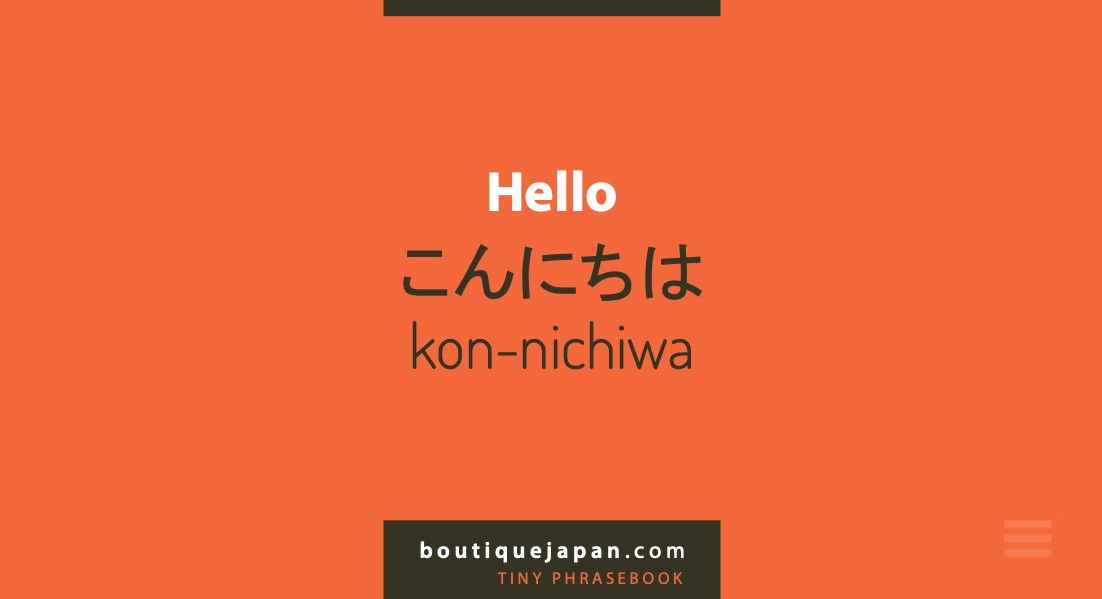 Konnichiwa hello
Konnichiwa hello
2.2. Arigatou Gozaimasu (ありがとうございます) – Thank you
Politeness is highly valued in Japan, and saying “thank you” is crucial. Arigatou gozaimasu is the formal way to express gratitude, while arigatou is a more casual option suitable for everyday interactions.
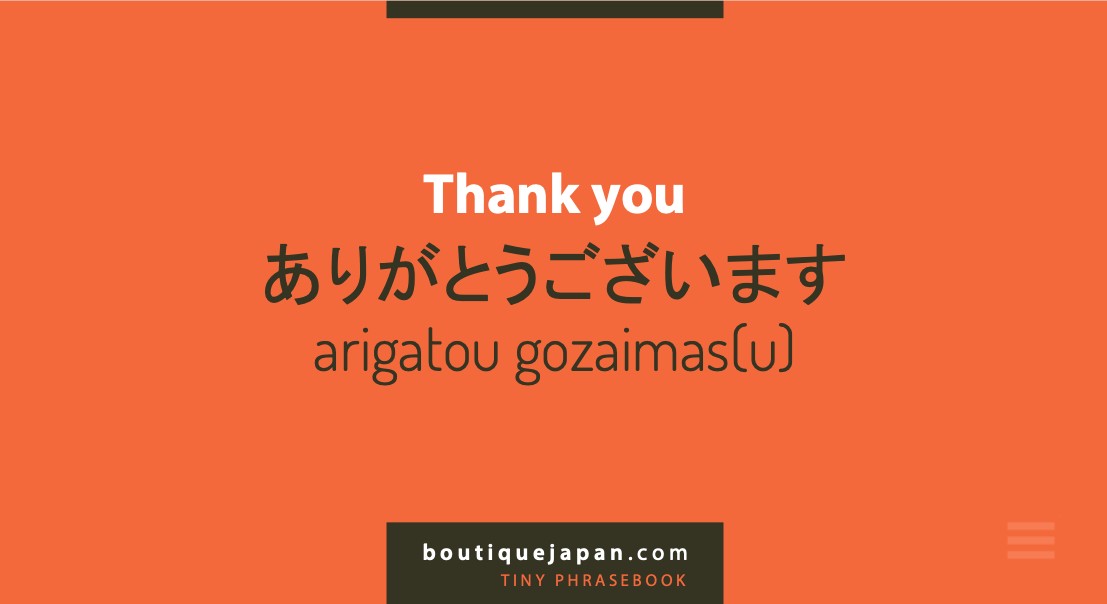 Arigatou thank you
Arigatou thank you
2.3. Sumimasen (すみません) – Excuse Me
Sumimasen is a versatile phrase used to get someone’s attention or to apologize. Use it to call a waiter in a restaurant or to express remorse if you accidentally bump into someone.
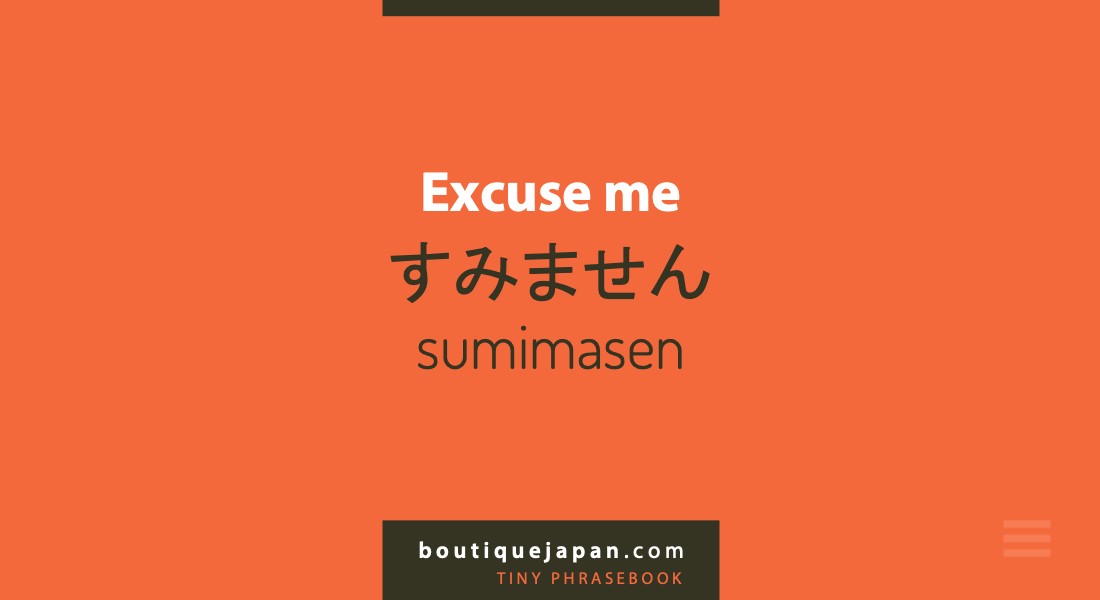 Sumimasen excuse me
Sumimasen excuse me
3. Basic Phrases for Everyday Situations
Beyond greetings, several phrases can help you navigate common situations, such as ordering food, asking for directions, and making purchases.
3.1. __ o Kudasai ( _をください) – I Would Like __, Please
This phrase is invaluable when ordering food or buying items. Simply insert the name of the item you want before “o kudasai.” For example, “mizu o kudasai” means “water, please.”
 Kudasai i would like japanese phrase
Kudasai i would like japanese phrase
3.2. __ wa Doko Desu ka? ( _はどこですか) – Where Is __?
Asking for directions is essential when exploring a new place. Use this phrase by replacing the blank with the place you’re looking for. For example, “eki wa doko desu ka?” means “Where is the station?”
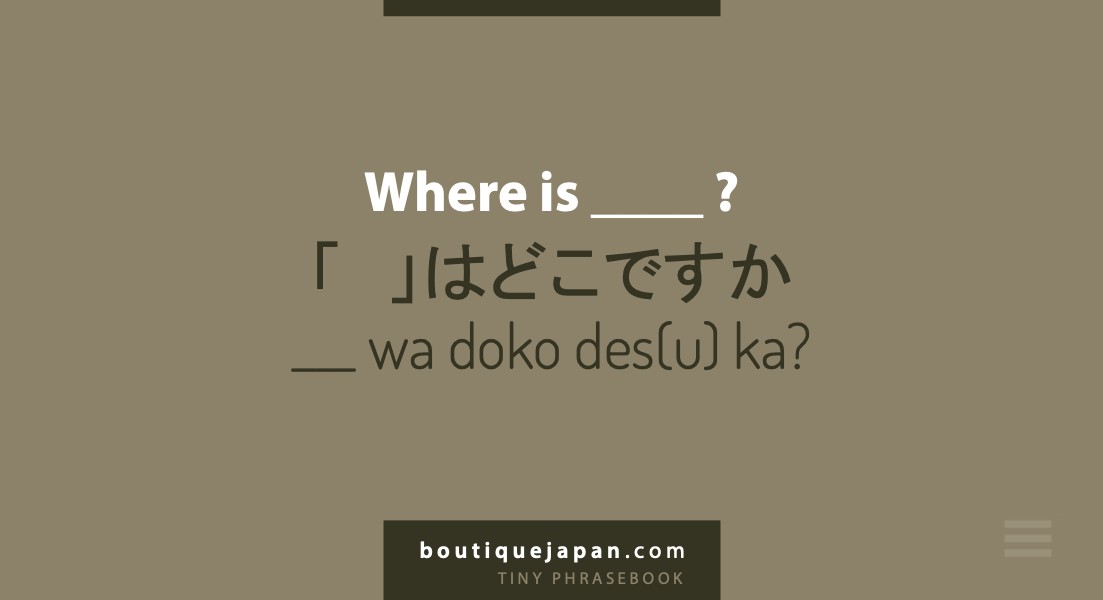 Doku desu ka where is
Doku desu ka where is
4. Food and Drink Phrases: Dining Like a Local
Japanese cuisine is renowned worldwide, and knowing a few phrases can enhance your dining experiences. From expressing gratitude for your meal to ordering chef’s recommendations, these phrases will help you navigate the culinary landscape.
4.1. Itadakimasu (いただきます) – Let’s Eat
Saying itadakimasu before a meal is a sign of gratitude and respect for the food and those who prepared it. It’s a cultural norm that will be appreciated whether you’re in a restaurant or someone’s home.
 Bon appetit itadaki-masu Japanese phrase
Bon appetit itadaki-masu Japanese phrase
4.2. Omakase de (お任せで) – Chef’s Recommendation
For adventurous eaters, omakase de means entrusting the chef to choose your meal. This is particularly popular at sushi restaurants, where the chef will select the freshest and best ingredients.
 Your recommendation omakase de
Your recommendation omakase de
4.3. O-sake (お酒) – Alcohol
In Japanese, o-sake refers to alcohol in general. If you’re looking for Japanese rice wine, you should specify nihonshu.
 Alcohol osake
Alcohol osake
4.4. Nihonshu (日本酒) – Japanese Rice Wine
To avoid confusion, use nihonshu when you want to order Japanese rice wine, commonly known as sake in English.
4.5. Kinen Seki (禁煙席) – Non-Smoking Seat
If you prefer a smoke-free environment, kinen seki will help you request a non-smoking seat in restaurants and other establishments.
 Non smoking area kinen seki Japanese phrase
Non smoking area kinen seki Japanese phrase
5. Time-Related Phrases for Planning
Knowing how to ask about time and days can be incredibly useful when making plans or coordinating travel.
5.1. Ima Nanji Desu ka? (今何時ですか) – What Time Is It Now?
This phrase is useful when you need to know the current time. The shorter version, nanji desu ka?, also works.
 What time is in ima nanji desu ka
What time is in ima nanji desu ka
5.2. Nanji ni? (何時に?) – At What Time?
Use this phrase when asking about the timing of an event or appointment. It’s helpful when making reservations or coordinating travel arrangements.
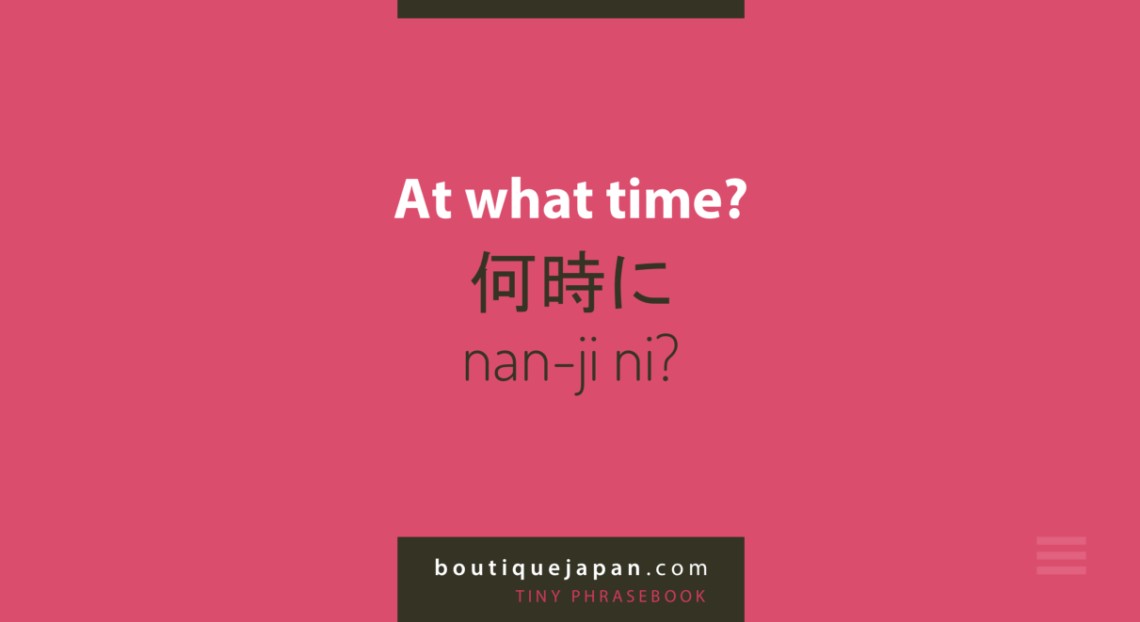 At what time nanji ni
At what time nanji ni
5.3. Asa (朝) – Morning
Asa means morning and is useful for specifying times of day, such as when making breakfast reservations (asagohan).
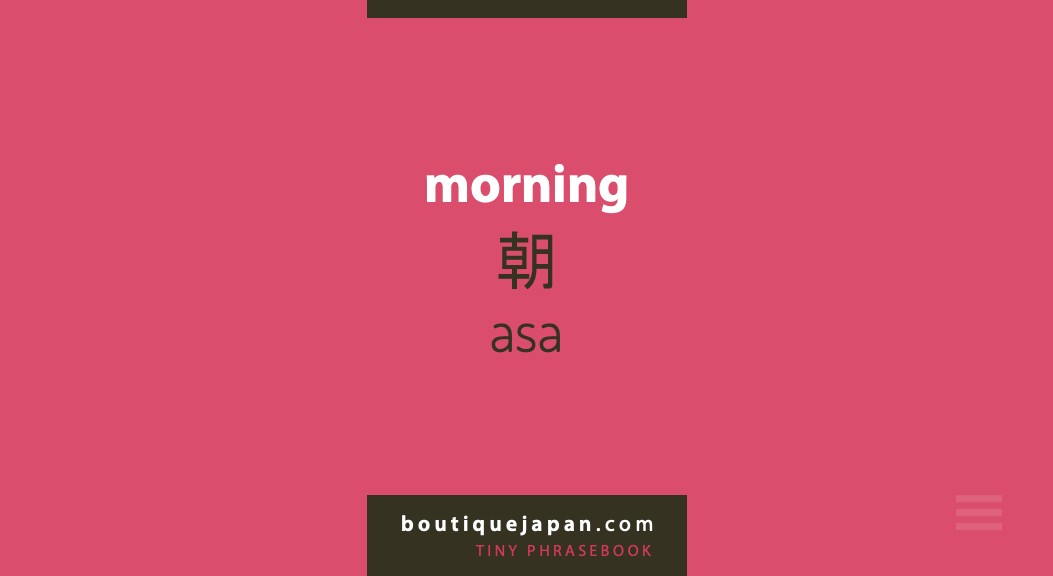 Morning asa
Morning asa
5.4. Kyou (今日) – Today
Knowing how to say “today” is helpful for confirming dates and making plans.
 Today kyou
Today kyou
5.5. Ashita (明日) – Tomorrow
Similarly, ashita (tomorrow) is essential for discussing future plans.
 Tomorrow ashita
Tomorrow ashita
6. Transportation Phrases: Navigating with Ease
Japan’s transportation system is efficient, but knowing a few key phrases can make navigating it much smoother.
6.1. __ ni Ikitai ( _に行きたい) – I Want to Go to __
Use this phrase to express your desired destination. For example, Kyoto ni ikitai means “I want to go to Kyoto.”
 I want to go to ni iki-tai Japanese phrase for travelers
I want to go to ni iki-tai Japanese phrase for travelers
6.2. Tomete Kudasai (止めてください) – Stop, Please
This is particularly useful in taxis when you want to tell the driver to stop.
 Stop here please tomete kudasai
Stop here please tomete kudasai
6.3. Kippu (切符) – Ticket
Kippu means ticket and is useful when purchasing train tickets. To ask for a ticket to a specific destination, you can say __ made no kippu o kudasai (ticket to __, please).
 Tickets to made no kippu o kudas
Tickets to made no kippu o kudas
6.4. Shinkansen (新幹線) – Bullet Train
The shinkansen is Japan’s famous bullet train. Knowing this word is essential for traveling long distances quickly and comfortably.
 Bullet train shinkan sen
Bullet train shinkan sen
6.5. Dono Densha? (どの電車?) – Which Train?
Use this phrase when you’re unsure which train to take. It’s helpful when navigating busy train stations.
 Which train dono densha
Which train dono densha
7. Overcoming the Language Barrier in Japan with SIXT.VN
While learning Japanese phrases can enhance your trip, you don’t need to be fluent to have a great experience. English is widely spoken in tourist areas, and many Japanese people are eager to help visitors. However, SIXT.VN can further ease your travel experience with various services:
- Airport Transfers: SIXT.VN offers reliable airport transfer services, ensuring a smooth start to your journey.
- Hotel Booking: Find the perfect accommodation through SIXT.VN, with options ranging from budget-friendly to luxury.
- Tour Packages: Explore Japan with SIXT.VN’s guided tours, designed to showcase the best of the country’s culture and attractions.
7.1 SIXT.VN: Your Gateway to Seamless Travel in Japan
SIXT.VN understands the challenges travelers face, especially when navigating a new country. That’s why we offer comprehensive services to ensure your trip is as smooth and enjoyable as possible. From the moment you arrive at the airport to the day you depart, SIXT.VN is there to assist you every step of the way.
7.2 Comprehensive Travel Solutions
According to a 2022 survey by the Japan Tourism Agency, 70% of foreign visitors cited language barriers as a significant challenge during their trip. SIXT.VN addresses this issue by providing:
- Multilingual Support: Our team offers support in multiple languages, ensuring clear communication and assistance whenever you need it.
- Detailed Itineraries: We provide detailed itineraries with translations of key phrases and locations, helping you navigate Japan with confidence.
- Customized Tours: Our tours are designed to cater to your specific interests, with knowledgeable guides who can bridge the language gap and provide valuable insights into Japanese culture.
7.3 Addressing Customer Challenges
Many travelers find it difficult to plan detailed itineraries, secure reliable transportation, and find trustworthy accommodations. SIXT.VN solves these problems by offering:
- Personalized Travel Planning: Our experts work with you to create a customized itinerary that suits your preferences and budget.
- Reliable Transportation: We offer airport transfers, private car services, and assistance with navigating Japan’s efficient public transportation system.
- Curated Accommodations: We partner with a wide range of hotels and accommodations, ensuring you find the perfect place to stay, whether you’re looking for luxury or budget-friendly options.
7.4 Benefits of Using SIXT.VN Services
Choosing SIXT.VN for your trip to Japan offers numerous advantages:
- Convenience: Streamline your travel planning with our all-in-one services, saving you time and effort.
- Reliability: Count on our trustworthy transportation and accommodations, ensuring a hassle-free experience.
- Support: Receive expert assistance and guidance throughout your trip, with multilingual support available whenever you need it.
- Cultural Immersion: Enhance your cultural experience with our customized tours and knowledgeable guides, providing a deeper understanding of Japan’s rich heritage.
By leveraging SIXT.VN’s services, you can focus on enjoying your trip to Japan without the stress of logistical challenges and language barriers.
Address: 260 Cau Giay, Hanoi, Vietnam.
Hotline/Whatsapp: +84 986 244 358
Website: SIXT.VN
8. Tips for Learning and Using Japanese Phrases
Learning a new language can be daunting, but with a few strategies, you can make the process more manageable and enjoyable.
- Start with the Basics: Focus on essential phrases and greetings before moving on to more complex sentences.
- Use Language Learning Apps: Apps like Duolingo and Memrise offer interactive lessons and vocabulary practice.
- Watch Japanese Media: Watching movies, TV shows, and anime can help you familiarize yourself with the sounds and rhythms of the language.
- Practice with Native Speakers: If possible, practice speaking with native Japanese speakers to improve your pronunciation and fluency.
- Carry a Phrasebook: A physical or digital phrasebook can be a handy reference when you’re on the go.
9. Common Mistakes to Avoid
When learning Japanese, it’s easy to make mistakes. Being aware of these common pitfalls can help you avoid them and improve your language skills.
- Incorrect Pronunciation: Pay attention to pronunciation, as slight variations can change the meaning of words.
- Using Casual Language in Formal Situations: Be mindful of the level of formality required in different situations.
- Ignoring Politeness: Politeness is crucial in Japanese culture, so always use polite language when interacting with others.
- Literal Translations: Avoid translating phrases directly from English, as the sentence structure and nuances may differ.
- Fear of Making Mistakes: Don’t be afraid to make mistakes; they are a natural part of the learning process.
10. Enhance Your Cultural Experience
Learning Japanese phrases is not just about practical communication; it’s also a way to connect with Japanese culture on a deeper level.
- Show Respect: Using Japanese phrases shows respect for the local culture and traditions.
- Engage with Locals: Speaking some Japanese can help you engage in meaningful conversations with locals.
- Understand Cultural Nuances: Learning the language can provide insights into cultural values and customs.
- Create Lasting Memories: Making an effort to speak Japanese can create memorable and enriching travel experiences.
11. Essential Japanese Vocabulary for Travelers
To complement the phrases, here’s a list of essential vocabulary words that will be useful during your trip:
| Word | Meaning |
|---|---|
| Eki | Station |
| Resutoran | Restaurant |
| Hoteru | Hotel |
| Byouin | Hospital |
| Toire | Toilet |
| Mizu | Water |
| Biiru | Beer |
| Tabemono | Food |
| Nomimono | Drink |
| Ikura | How much? |
| Takai | Expensive |
| Yasui | Cheap |
| Chizu | Map |
| Michi | Road |
| Hidari | Left |
| Migi | Right |
| Massugu | Straight |
| Tetsudou | Railway |
| Basutei | Bus stop |
12. Advanced Phrases for Special Situations
For those looking to go beyond the basics, here are some advanced phrases that can be useful in specific situations:
- Wakarimasen (わかりません) – I don’t understand.
- Eigo ga hanasemasu ka? (英語が話せますか?) – Do you speak English?
- Sukoshi dake (少しだけ) – Just a little.
- Tasuke te! (助けて!) – Help!
- Kore wa nan desu ka? (これは何ですか?) – What is this?
- Sumimasen, shitsurei shimasu (すみません、失礼します) – Excuse me, I’m sorry for the intrusion.
13. Understanding Japanese Etiquette
Japanese etiquette plays a significant role in communication. Here are a few key points to keep in mind:
- Bowing: Bowing is a common greeting and a sign of respect. The depth of the bow depends on the situation and the person you are greeting.
- Removing Shoes: It’s customary to remove your shoes when entering homes, temples, and some traditional restaurants.
- Using Chopsticks: There are specific etiquette rules for using chopsticks, such as not sticking them upright in a bowl of rice.
- Gift-Giving: If you’re invited to someone’s home, it’s customary to bring a small gift.
- Avoiding Loud Noises: Be mindful of noise levels in public places, especially on trains and in quiet areas.
14. Useful Apps and Resources for Learning Japanese
Numerous apps and resources can help you learn Japanese and improve your language skills:
- Duolingo: A popular language learning app with interactive lessons and gamified learning.
- Memrise: An app that uses spaced repetition to help you memorize vocabulary and phrases.
- Rosetta Stone: A comprehensive language learning program that focuses on immersion.
- Tandem: A language exchange app that connects you with native speakers for practice.
- HelloTalk: Another language exchange app with features like text and voice chat.
- YouTube Channels: Channels like “JapanesePod101” and “Learn Japanese with JapanesePod101.com” offer free lessons and cultural insights.
15. Frequently Asked Questions (FAQs) About Japanese Travel Phrases
15.1. Is it necessary to learn Japanese before traveling to Japan?
No, it’s not necessary, but learning a few basic phrases can significantly enhance your travel experience and show respect for the local culture.
15.2. How much English is spoken in Japan?
English is widely spoken in tourist areas, but it’s less common in rural areas. Many Japanese people have some basic English knowledge.
15.3. What are the most important phrases to learn?
Essential phrases include greetings (hello, thank you, excuse me), asking for directions, and ordering food.
15.4. Can I use English menus in restaurants?
Many restaurants in tourist areas have English menus, but it’s helpful to know some basic food-related phrases.
15.5. How can SIXT.VN help with the language barrier?
SIXT.VN offers multilingual support, detailed itineraries with translations, and customized tours with knowledgeable guides.
15.6. What should I do if I don’t understand something?
Politely say “Wakarimasen” (I don’t understand) and try to use gestures or a translation app to communicate.
15.7. Is it okay to use casual language with anyone?
No, it’s important to use polite language, especially with strangers and in formal situations.
15.8. How do I ask for help in Japanese?
Say “Tasuke te!” (Help!) in case of an emergency.
15.9. What’s the best way to practice my Japanese?
Practice with native speakers, use language learning apps, and watch Japanese media.
15.10. Are there any cultural faux pas I should avoid?
Avoid sticking chopsticks upright in a bowl of rice, blowing your nose in public, and being overly loud in quiet areas.
Conclusion: Embrace the Journey with Japanese Travel Phrases
Learning Japanese travel phrases can transform your trip from a simple vacation into a culturally immersive experience. While it’s not essential to be fluent, knowing a few key phrases will enhance your interactions, show respect for the local culture, and make your journey smoother and more enjoyable. Whether you’re navigating the bustling streets of Tokyo or exploring the serene temples of Kyoto, these phrases will help you connect with Japan on a deeper level. And for seamless travel solutions, remember that SIXT.VN is here to assist you every step of the way, from airport transfers to customized tours. So, pack your bags, brush up on your Japanese, and get ready for an unforgettable adventure in the Land of the Rising Sun!



